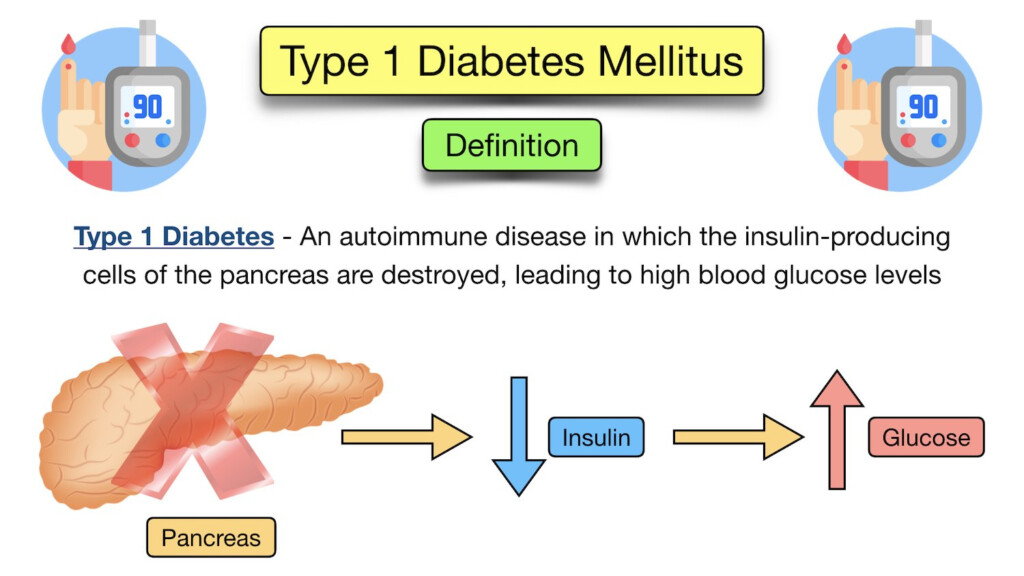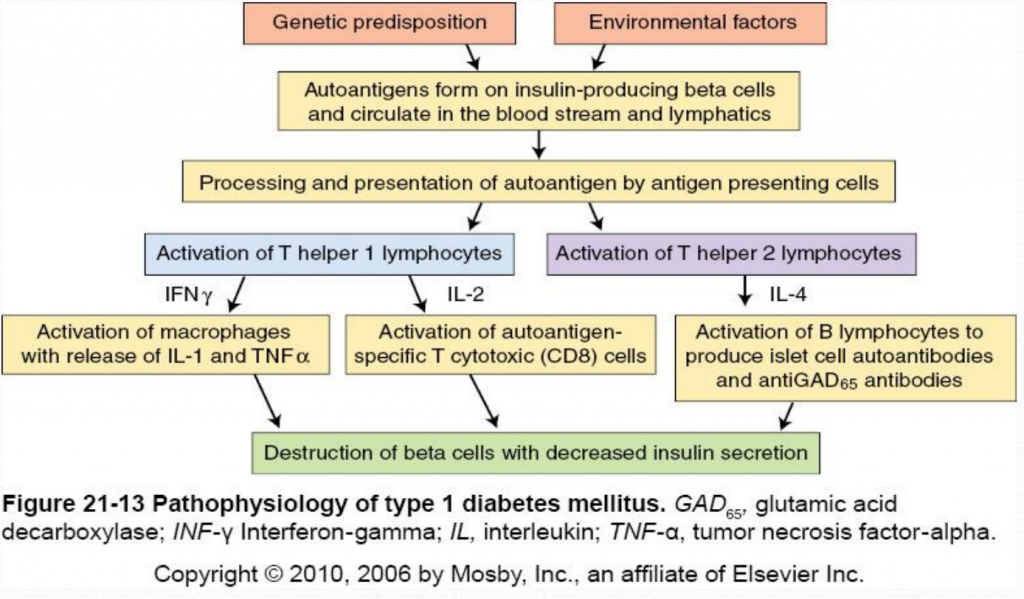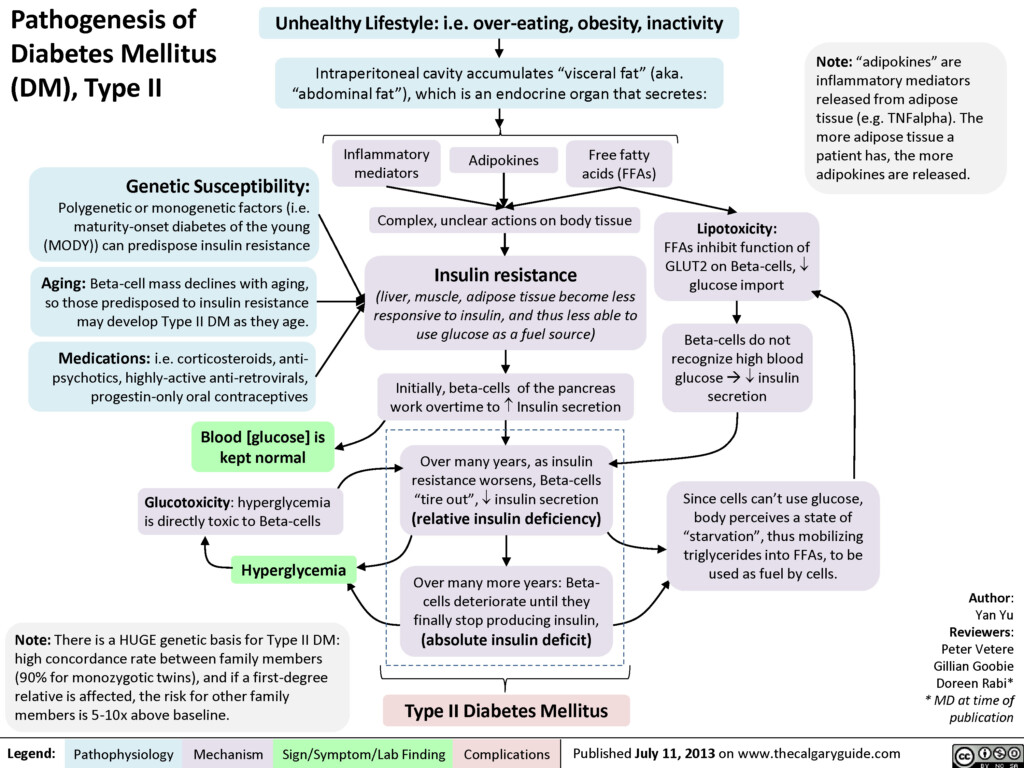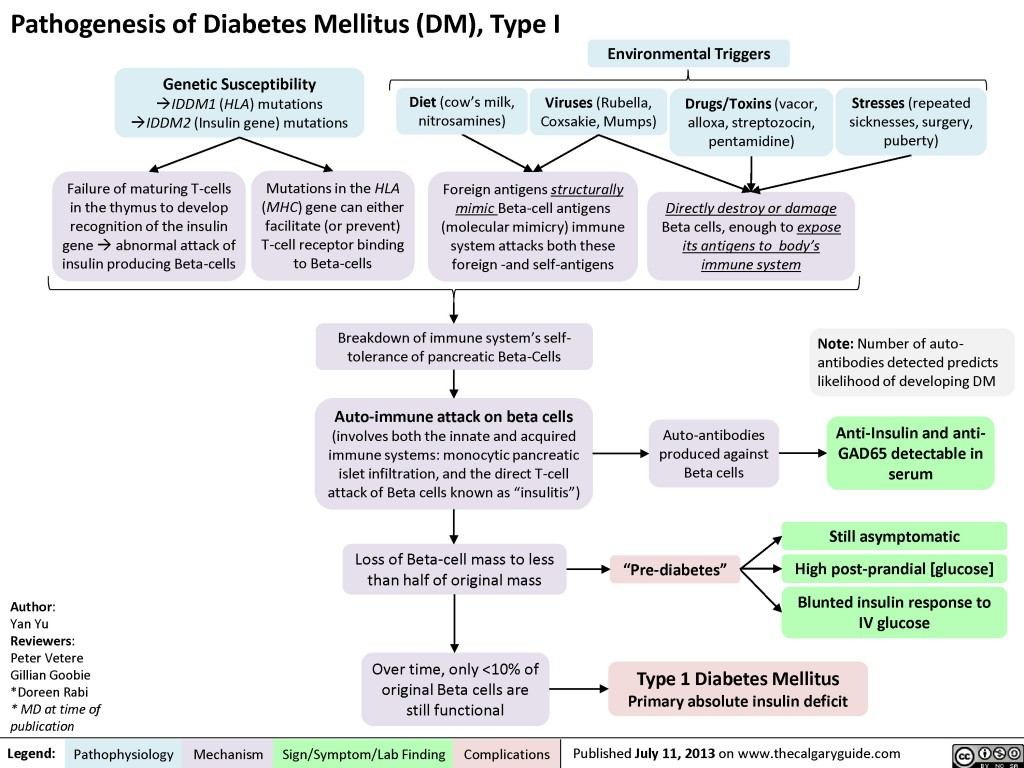Diabetes Mellitus Type 1, also known as insulin-dependent diabetes, is a chronic condition that affects the body’s ability to regulate blood sugar levels. Unlike Type 2 diabetes, which is often linked to lifestyle factors, Type 1 diabetes is an autoimmune disease where the body mistakenly attacks the insulin-producing beta cells in the pancreas.
Without enough insulin, the body is unable to properly process glucose, leading to high blood sugar levels. This can result in a range of symptoms, including increased thirst, frequent urination, fatigue, and weight loss.
Diabetes Mellitus Type 1 Pathophysiology Flow Chart
Pathophysiology of Type 1 Diabetes
The pathophysiology of Type 1 diabetes can be summarized in a flow chart that outlines the key steps in the development and progression of the disease. The flow chart typically starts with the genetic predisposition for Type 1 diabetes, which is often triggered by environmental factors such as viral infections or exposure to certain toxins.
As the autoimmune response begins, the immune system attacks and destroys the beta cells in the pancreas, leading to a decrease in insulin production. Without enough insulin, glucose cannot enter the cells for energy, resulting in high blood sugar levels. Over time, this chronic hyperglycemia can damage organs and tissues throughout the body, leading to complications such as cardiovascular disease, neuropathy, and kidney damage.
Management of Type 1 Diabetes
Managing Type 1 diabetes involves a combination of insulin therapy, monitoring blood sugar levels, following a healthy diet, and regular exercise. By carefully monitoring blood sugar levels and adjusting insulin doses as needed, individuals with Type 1 diabetes can effectively manage their condition and reduce the risk of complications.
Understanding the pathophysiology of Type 1 diabetes and how it affects the body can help individuals with the condition and their healthcare providers develop personalized treatment plans that address their unique needs and goals. By staying informed and proactive, individuals with Type 1 diabetes can lead healthy and fulfilling lives.
By incorporating a flow chart that visually represents the pathophysiology of Type 1 diabetes, individuals can gain a better understanding of how the disease progresses and how different factors contribute to its development. This can help to educate and empower individuals with Type 1 diabetes to take control of their health and well-being.
Download Diabetes Mellitus Type 1 Pathophysiology Flow Chart
Schematic Diagram Of Type 1 Diabetes Mellitus Mellitus Pathophysiology
Pathophysiology And Clinical Presentation Type 1 Diabetes Mellitus
Pathogenesis Of Diabetes Mellitus DM Type II Calgary Guide
Pathogenesis Of Diabetes Mellitus DM Type I Calgary Guide




